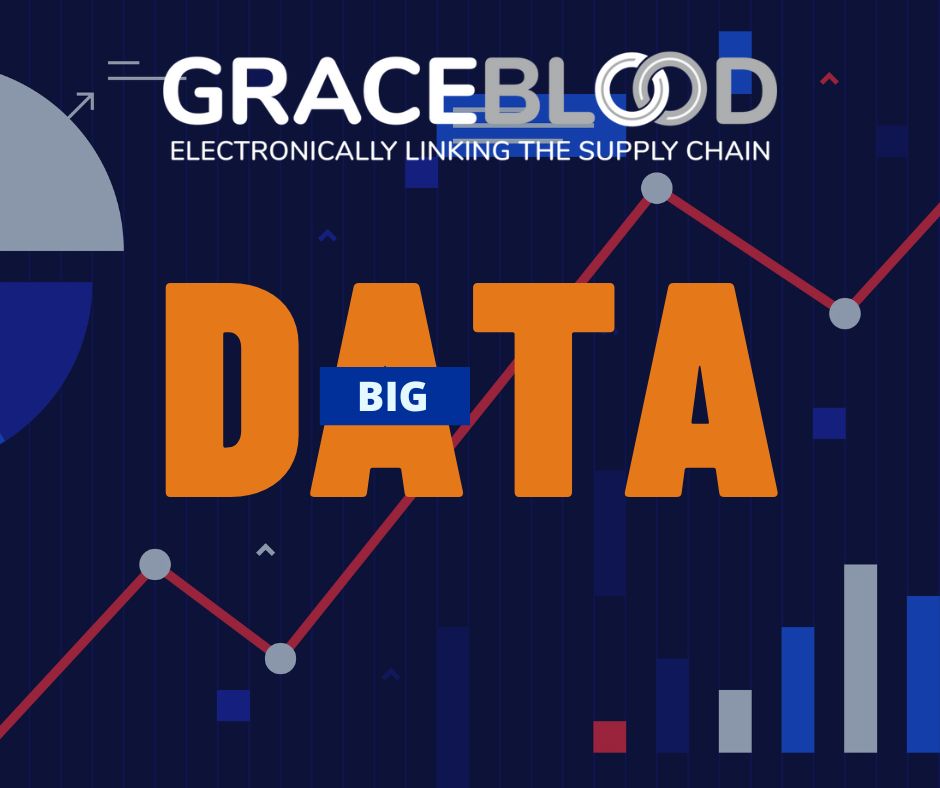
Trade wars create a ripple effect across every link of the supply chain. Tariffs, import restrictions, and shifting geopolitical alliances can make it difficult for organizations to plan ahead, budget accurately, or maintain operational efficiency. During these uncertain times, the ability to adapt quickly is more than a competitive advantage—it’s a survival imperative. That’s where AI automation for EDI (Electronic Data Interchange) becomes crucial. As companies face mounting pressure to do more with less, AI-powered EDI solutions offer a scalable, intelligent way to cut costs and remain agile in the face of unpredictable trade policies. This blog explores how organizations can harness AI-driven EDI automation to stay ahead of the curve, reduce overhead, and ensure business continuity during short-term trade disruptions.
Table of Contents
- Understanding the Impact of Trade Wars on Supply Chains
- What is AI Automation for EDI?
- How AI Automation for EDI Helps Cut Costs During a Trade War
- Maintaining Agility AI Automation for EDI
- Getting Started: Building Your AI-Driven EDI Strategy
Understanding the Impact of Trade Wars on Supply Chains
Trade wars impose direct and indirect costs on global supply chains:
- Tariff Increases: These raise the cost of imported goods, making raw materials or finished products more expensive.
- Supplier Shifts: Companies are forced to find alternate suppliers, often in unfamiliar or untested regions.
- Longer Lead Times: Cross-border logistics become slower and more complex, particularly when new customs documentation or compliance regulations are introduced.
- Inventory Volatility: Fluctuating demand and disrupted supply lead to stockouts or surplus inventory, both of which are costly.
These challenges underscore the need for real-time visibility, such as what VelociLink™ offers, faster decision-making, and adaptable workflows—all of which can be supported by AI automation within EDI environments.
What Is AI Automation for EDI?
Electronic Data Interchange (EDI) enables organizations to electronically exchange business documents, such as purchase orders, invoices, and shipping notices, in standardized formats. AI automation for EDI integrates artificial intelligence into these processes to:
- Detect anomalies or exceptions in transactions based on historical transactions
- Suggest or implement corrective actions
- Automate repetitive tasks such as document routing or validation
- Optimize partner onboarding and testing
Unlike traditional rule-based automation, AI-driven EDI learns from past transactions and continuously improves, offering smarter, faster, and more resilient data exchange.
How AI Automation for EDI Helps Cut Costs During a Trade War
-
Reducing Manual Labor and Human Error
When trade policies change overnight, companies often need to reroute orders or modify documentation. Manually updating hundreds or thousands of transactions across trading partners is slow and error-prone.
AI automation minimizes human involvement by:
- Validating documents automatically
- Flagging inconsistent pricing or delivery schedules
- Resolving format errors without IT intervention
These capabilities reduce operational overhead, avoid costly fines or delays, and free up staff to focus on strategic adjustments.
-
Enhancing Data Accuracy and Compliance
Customs declarations, tariffs, and tax codes can change with little notice during trade conflicts. Mistakes in these areas can lead to penalties, delays, or seizure of goods.
AI-driven EDI solutions can:
- Integrate real-time updates from regulatory databases
- Automatically apply new codes or formats to documents
- Ensure that trading partners receive compliant data
By removing compliance bottlenecks, AI automation for EDI keeps goods moving and helps avoid costly compliance breaches.
-
Streamlining Supplier Onboarding and Switching
One of the most common responses to tariffs is shifting to new suppliers. However, onboarding new vendors traditionally involves lengthy EDI mapping, testing, and validation cycles.
AI automation accelerates this process by:
- Analyzing prior trading partner configurations
- Suggesting prebuilt templates or mappings
- Auto-generating test scenarios to validate transaction flows
This enables rapid supplier transitions, maintaining continuity even when global sourcing strategies shift.
-
Improving Demand Forecasting and Inventory Management
Trade wars often distort demand patterns. Some companies experience panic buying, while others face unexpected slowdowns. AI models trained on EDI transaction data can improve forecasting accuracy by identifying patterns and predicting behavior.
For example:
- Purchase order history and ASN data can be analyzed to predict future needs
- AI can suggest optimal reorder points or shipping methods
- Dynamic inventory rules can adjust based on real-time transaction trends
This reduces carrying costs and avoids excess inventory while maintaining service levels.
-
Enabling Real-Time Decision-Making
Trade disruptions require fast, informed decisions. Traditional EDI systems are often passive—they process documents but do not analyze them. With AI automation layered into EDI platforms, organizations gain:
- Real-time dashboards with predictive analytics
- AI-powered alerts on potential supply chain disruptions
- Automated recommendations for rerouting or reordering
This enables agile, data-driven decisions in response to rapidly changing conditions.
Maintaining Agility with AI Automation for EDI
In addition to cost savings, agility is the other essential pillar organizations must prioritize during a trade war. The ability to pivot quickly—whether by rerouting supply chains, onboarding new partners, or updating compliance measures—is what separates the resilient from the reactive. AI automation for EDI serves as a catalyst for this agility. By making data-driven decisions faster and more accurately, AI-infused systems give businesses the operational flexibility they need to manage volatility. Below are three key ways AI automation enhances business agility.
Flexible Document Handling
One of the most challenging aspects of EDI in a dynamic trade environment is managing a wide variety of document types, formats, and standards. Every trading partner may use a slightly different version of an EDI standard like X12, EDIFACT, or even XML-based protocols. During trade wars, these discrepancies are magnified as organizations are forced to engage with new suppliers and customers, often in regions with vastly different EDI compliance norms.
AI automation addresses this by:
- Automatically recognizing and adjusting to different EDI document schemas without requiring manual intervention from IT teams.
- Using machine learning algorithms to learn partner-specific idiosyncrasies, such as custom segment identifiers or optional fields that are considered mandatory by certain partners.
- Detecting and adapting to format changes mid-cycle, allowing trading partners to update their documentation or processes without breaking the data exchange pipeline.
For example, if a Chinese supplier suddenly shifts from EDIFACT D96A to D01B, traditional EDI systems would require manual reconfiguration or remapping—potentially taking days. With AI automation, the system can detect changes in document structure, suggest necessary adjustments, and even simulate test transactions before deployment. This level of flexibility ensures that business is not disrupted simply because document versions have changed.
Moreover, flexible document handling means that companies can quickly incorporate additional data fields required by new trade policies or regulations, such as tariff codes, country-of-origin declarations, or environmental compliance data. All of this can be achieved with minimal human intervention, accelerating turnaround times and minimizing disruption.
Multi-Partner Ecosystem Integration
In a trade war scenario, companies often need to diversify their supply base quickly. This might involve sourcing components from multiple countries to bypass tariffs, or integrating with logistics providers who can route shipments around disrupted ports or restricted trade zones.
However, managing a sprawling network of trading partners, each with different capabilities, protocols, and technology stacks, is a daunting task. This is where AI-powered EDI integration becomes a game-changer.
AI automation for EDI enables:
- Faster partner onboarding, using AI to analyze previous onboarding patterns and auto-generate mapping templates based on historical similarities.
- Intelligent exception handling, allowing systems to detect, flag, and resolve errors in communication with less mature partners who might be using legacy or inconsistent EDI formats.
- Format translation and data normalization in real-time, so a U.S.-based manufacturer can seamlessly exchange data with partners using either ANSI X12 or EDIFACT, without extensive translation middleware.
This functionality is especially valuable for organizations expanding into new international markets where standardization may be low and communication challenges high. Whether dealing with an EU-based distributor that prefers EDIFACT or a South American supplier using XML, AI can bridge the format and process gaps smoothly. Additionally, AI can assess partner performance over time by monitoring key metrics like document turnaround times, acknowledgment rates, and compliance with SLAs. This creates a feedback loop that helps organizations refine their partner ecosystem, prioritize reliable vendors, and reduce supply chain risk.
The result? An ecosystem that is not only large and diverse but also interoperable and responsive, making it easier for organizations to shift resources and react to external shocks without sacrificing efficiency.
Business Continuity Planning
Trade wars don’t just impact current operations—they introduce long-term uncertainty that can paralyze decision-making. What if tariffs on a key raw material increase again next quarter? What happens if a critical port is shut down due to a new sanction? These what-if scenarios demand proactive planning, not just reactive execution.
AI automation for EDI plays a critical role in business continuity by:
- Simulating future disruptions based on current trade policies, political developments, and historical data. These simulations help companies model the impact of changes like new tariffs, restricted trade zones, or currency fluctuations on their supply chains.
- Creating adaptive workflows that reroute orders, change suppliers, or adjust pricing strategies automatically based on predefined risk thresholds.
- Generating real-time insights and alerts, so decision-makers can act on disruptions before they cascade through the supply chain.
For instance, let’s say a company sources semiconductors from Taiwan and suddenly faces export restrictions due to a diplomatic breakdown. An AI-enhanced EDI system can automatically:
- Analyze historical transaction data to identify alternate suppliers already in the system.
- Simulate the financial and logistical impact of switching to a South Korean supplier.
- Automatically generate the necessary EDI documents (e.g., new POs, shipping instructions) and route them through compliant channels.
This kind of proactive, AI-driven scenario modeling ensures that companies aren’t caught off guard. It transforms business continuity planning from a theoretical exercise into a dynamic, data-informed capability that can be executed in real time.
Furthermore, by integrating AI into disaster recovery and continuity workflows, businesses can ensure that even in worst-case scenarios—such as cyberattacks, trade embargoes, or supplier bankruptcies—they have pre-vetted, automated processes to maintain operations with minimal disruption.
Real-World Use Case: A Mid-Sized Manufacturer Navigates Tariff Hikes
Let’s consider a mid-sized U.S. manufacturer importing raw materials from China. When new tariffs are introduced overnight, the company faces a 25% cost increase on its imports. Here’s how they leveraged AI automation for EDI to respond:
- AI instantly flagged PO line items impacted by new tariff codes.
- The system automatically suggested alternate domestic suppliers, using historical price and lead-time data.
- New trading partners were onboarded using AI-mapped EDI templates, cutting setup time by 60%.
- Inventory levels were rebalanced based on revised demand forecasts, driven by AI analysis of sales orders and ASNs.
Again, the result? The company mitigated tariff costs, avoided supply disruptions, and adapted quickly without hiring additional staff or overhauling its systems.
Getting Started: Building Your AI-Driven EDI Strategy
To capitalize on the benefits of AI automation for EDI during a trade war, consider these steps:
-
Audit Your Current EDI Processes
Identify which processes are still manual, error-prone, or slow. Focus on high-impact areas such as order management, invoicing, and compliance documentation.
-
Choose the Right AI-Enabled EDI Platform
Look for features such as predictive analytics, partner onboarding automation, exception handling, and integration with ERP or TMS platforms.
-
Train Teams on New Capabilities
Operational teams must understand how to interpret AI-generated recommendations and exceptions. Provide onboarding and training to ensure adoption.
-
Align with Compliance and Legal Teams
Ensure that your AI-enhanced workflows align with international trade regulations, data privacy laws, and industry standards.
-
Continuously Measure ROI
Track metrics such as processing speed, error rates, compliance rates, and onboarding timelines to evaluate the impact of AI automation over time.
Navigate Trade Wars with Confidence
In times of economic volatility and trade uncertainty, companies must be both cost-conscious and agile. AI automation for EDI provides the intelligence, speed, and flexibility needed to navigate trade wars with confidence.
By replacing rigid, manual workflows with adaptive, intelligent systems, organizations can respond to new tariffs, reroute supply chains, and onboard partners faster than ever before—without sacrificing accuracy or compliance.
Whether you’re a global enterprise or a growing manufacturer, investing in AI automation for EDI today ensures you’re ready for tomorrow’s challenges. You don’t have to do this alone. Connect with the experts at GraceBlood and harness the power of our AI-enabled VelociLink™ solution to stay agile and resilient amid ongoing global trade disruptions.








